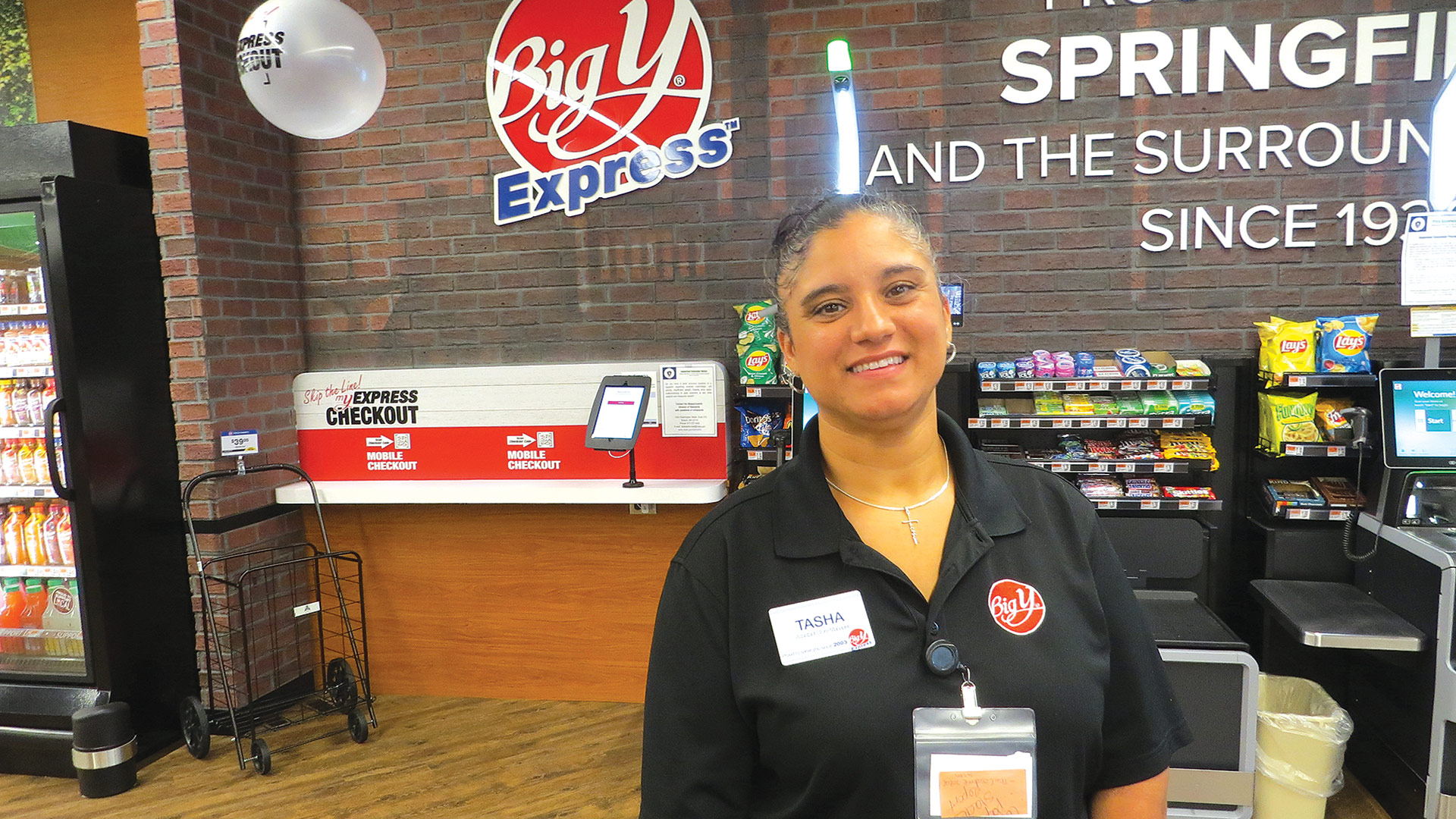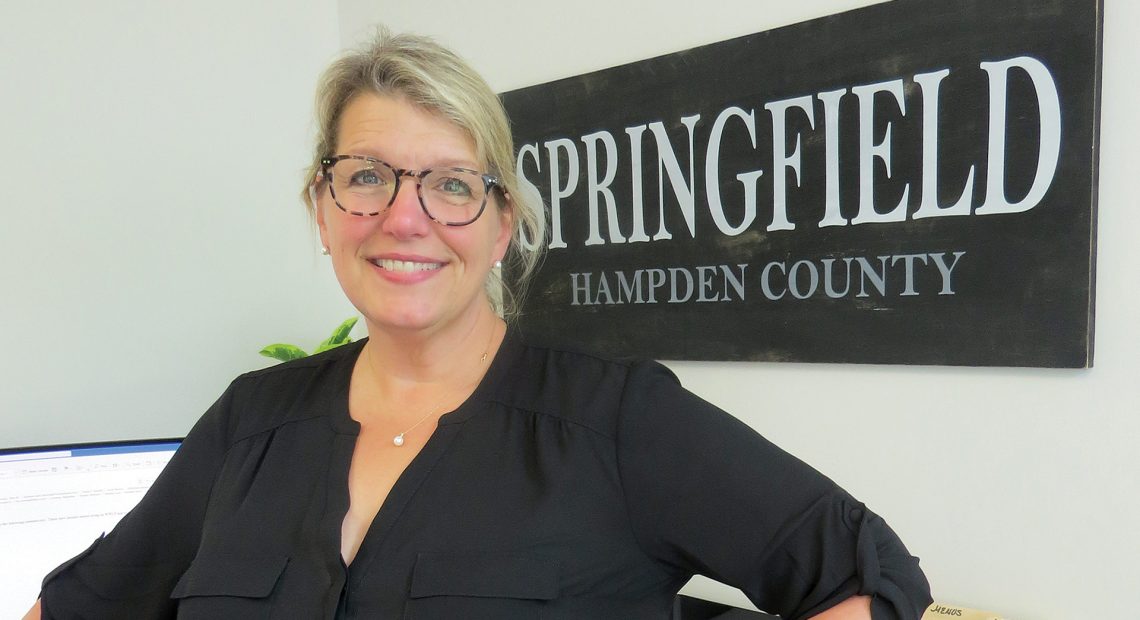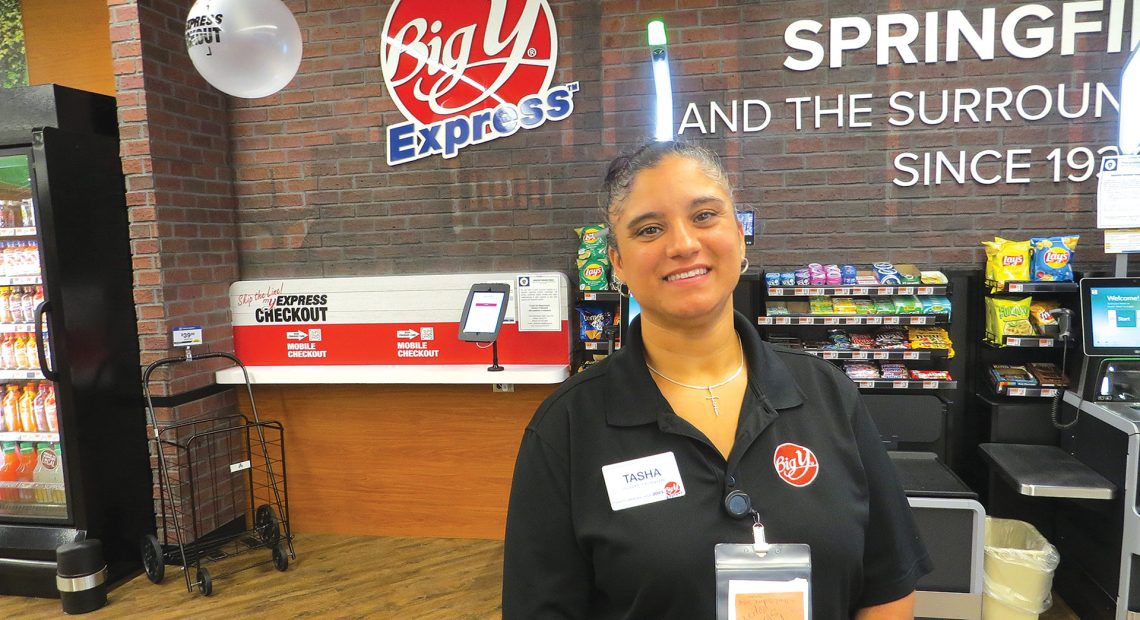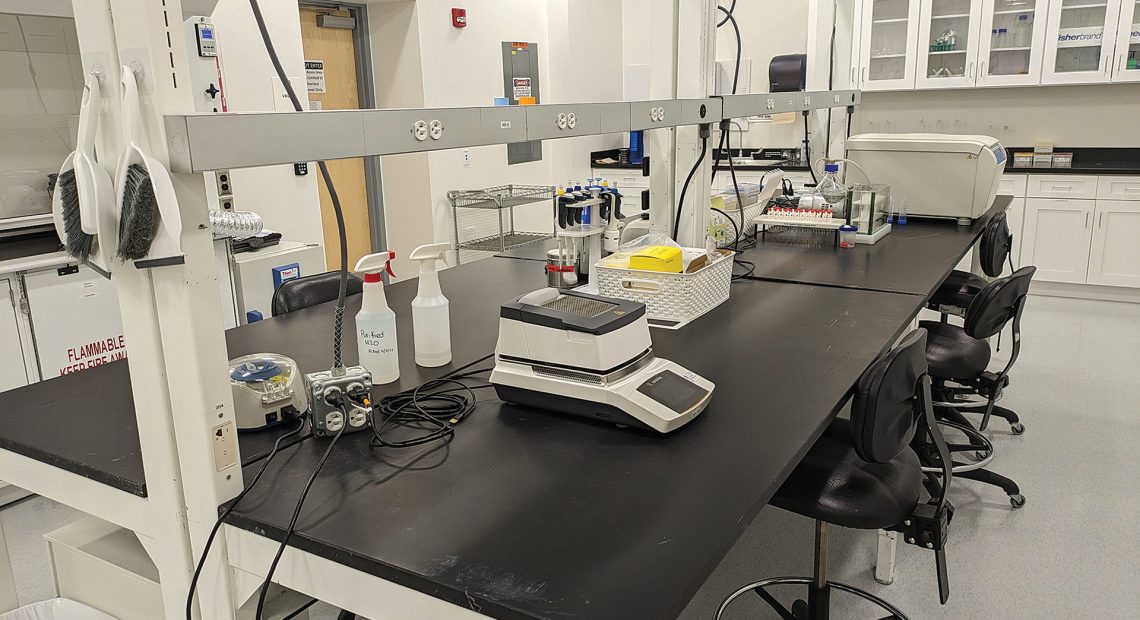Community Spotlight

Natasha Dymnicki, assistant manager of Big Y’s Tower Square location, shows off the new facility, which is off to a solid start, according to company officials.
As he reflected on 16 years in office and his intention to serve another four, Springfield Mayor Domenic Sarno said that, while much has been accomplished during his tenure in the corner office — the longest in the city’s history — “there is still considerable work to be done.”
And that assessment covers many different fronts — from public safety to revitalization of the city’s downtown; from working with the state to design and build a replacement for the troubled Roderick Ireland Courthouse to continuing efforts to improve neighborhoods; from schools to hospitality and tourism.
But it’s especially true when it comes to the broad issue of housing, which has been identified as a both a pressing need and a key ingredient in a formula to revitalize neighborhoods, including the downtown, and spur economic development.
Indeed, housing is at the heart of a number of projects at various stages of development in the city, from the long-awaited restoration of the former Court Square Hotel to the reimagining of the former Knox manufacturing building in the Mason Square neighborhood to the redevelopment of the former Gemini site in the South End.
“It will probably take a full year to really get settled in and fully understand all the nuances of this. It’s a different model, and we’ve been working through a lot of things like staffing and logistics.”
And housing will be at least part of the equation with several other initiatives, from the redevelopment of the Eastfield Mall on Wilbraham Road, which closed its doors last month, 55 years after it opened, to Sarno’s preferred resolution of the question of how best to replace the courthouse (more on that later).
“When you listen to Governor Healey and Lieutenant Governor Driscoll, every other word out of their mouth is housing,” the mayor said. “So, a lot of projects we’re pitching, including Eastfield Mall, have a housing component.”
Beyond housing, though, there are a number of intriguing and mostly positive developments in the city, said Sarno and Chief Development Officer Tim Sheehan, offering a list that includes:
• New restaurants in the Worthington Street/Bridge Street corridor;
• The new Big Y market in Tower Square, a unique addition to the landscape made possible by ARPA money;
• New additions to the outdoor marketing menu, also made possible by ARPA money;
• Some real momentum at MGM Springfield almost five years to the day since it opened; the past three quarters have been the best recorded by the facility when it comes to gross gaming revenue;
• An ambitious infrastructure project involving the ‘X’ in the Forest Park neighborhood, one that is designed to improve traffic flow in that area but also spur business development;
• A project to replace the Civic Center parking garage, a state-funded project that will not only provide needed parking, but also activate neighboring space and create an area outside the MassMutual Center similar to Lansdowne Street outside Fenway Park;
• Considerable response from the development community to a request for proposals to redevelop the vacant or underutilized properties across Main Street from MGM Springfield; and
• Vibrancy downtown, highlighted by a weekend in June when the IRONMAN competition coupled with performances by Bruno Mars and Tina Fey and Amy Poehler brought 50,000 people to MGM Springfield facilities.
“Downtown was alive, it was electric … you had to wait to get a seat at restaurants; this is the kind of vibrancy we want downtown,” Sarno said, adding that there have been many weekends like this over the past several years, and more to come.

The former Knox automobile manufacturing plant in Mason Square is one of many properties in the city being converted to housing, or to feature a housing component.
As for MGM, the mayor said the casino, the city’s largest taxpayer, has become a partner on many levels — with the city and state on projects like Court Square, and with area nonprofits on several different initiatives — and a key contributor to the vibrancy downtown. “They’ve been critically important to the nightlife of the city, and they’ve been a good corporate citizen.”
For this, the latest installment of its Community Spotlight, BusinessWest takes an in-depth look at the latest developments in the City of Homes, which is focused on many initiatives, but especially creating … well, more homes.
What’s in Store?
Reflecting on the few first months the Big Y Market has been open in Tower Square, Clair D’Amour-Daley, the company’s vice president of Corporate Affairs, said it’s going to take more than a few months for this picture to come fully into focus and this unique model to fully develop.
By that, she meant this concept is something totally new, not just for Big Y, but in the broad grocery-store realm itself — at least as far as she and others at the company can determine.
“We have nothing like it, and I’m not sure we’ve been able to model anything quite like it,” she said, adding that this is, in many respects, a scaled-down version of a Big Y supermarket, maybe one-fifth the size of a traditional store, offering many but certainly not all of the items available in one of the larger markets. It was conceptualized to address the food desert that exists downtown, and also meet the identified needs of downtown office workers, as well as people coming into the city for various events and gatherings.
“There are three basic constituents for customers,” she said. “There’s the downtown workers, and there is obviously some ebb and flow there, but we’re coming to understand that market. The second part is the tourism piece, and it has its own cadence. And then, we’re still really learning to tap into the residential community downtown, and that’s significant; we have a lot of customers tell us that they no longer have to walk or otherwise get to our store on Memorial Avenue in West Springfield.
“We want to continue to create market-rate housing, but we’ve also been successful in doing workforce-development housing.”
“We’re learning all those things and learning what types of products to put in, although we’re trying not to make radical changes just yet,” D’Amour-Daley went on. “It will probably take a full year to really get settled in and fully understand all the nuances of this. It’s a different model, and we’ve been working through a lot of things like staffing and logistics.”
Thus far, the store is off to a solid start, she said, adding quickly that, because the model is so different, Big Y is still trying to figure out how to accurately gauge results.
“There are so many variables, and we didn’t want to jump to conclusions right away,” she said. “But it’s been steady; we’re happy with where we are, and we’re just in a wait-and-see mode, waiting for things to settle.”
The Big Y project is one of many ARPA-funded initiatives aimed at helping businesses and, in this case, spurring economic development and improvements within specific neighborhoods, Sarno said, adding that, while most cities have dedicated the bulk of their ARPA funds to infrastructure work (and Springfield has done some of that), certainly, most of the more than $123 million has gone to help small businesses and individuals.
“More than 80% of the ARPA funds we’ve put out have gone to minority- and women-owned businesses,” he said. “We moved very quickly to help prime the pump and help businesses that wanted to stay open at the start of the pandemic and, in many cases, reinvent themselves.”
At Home with the Idea
As noted earlier, perhaps the biggest priority for the city moving forward, from the standpoint of both neighborhood improvements and economic development, is housing, the mayor said.
Tim Sheehan, the city’s chief Development officer, agreed, noting that housing is either being planned for, or at least contemplated, at a wide range of sites. That list includes the former School Department building on State Street as well as another project at 310 State St.; the Mardi Gras property on Worthington Street, recently sold by its owner, James Santaniello, for $2.3 million, and other properties on Worthington; the Eastfield Mall site; the properties across Main Street from MGM Springfield, including the Clocktower Building and the Fuller Block; the former Gemini Corp. factory site on Central Street in the South End; a former warehouse building on Lyman Street; and others.
This is in addition to the 90 units being built at the former Knox Automobile factory at 53 Wilbraham Road, a project being undertaken by First Resource Development Corp., which has developed a number of properties in the city, including the former Indian Motocycle manufacturing facility across Wilbraham Road from the Knox property, as well as the Court Square development (75 units), a project at 169 Maple St., and the completed redevelopment of the former Willys-Overland building on Chestnut Street as the Overland Lofts.
This housing comes in many different forms, from ownership housing at the Eastfield Mall site to various types of apartments, including affordable units and another category that is called “workforce-development housing,” Sarno explained.
“We want to continue to create market-rate housing, but we’ve also been successful in doing workforce-development housing,” he noted, referencing housing that, in the case of the Court Square project, is limited to tenants making 80% of the region’s median income. “That’s an important component of what we’re doing, and we need to do this because there’s a housing crisis in the Commonwealth and across the country.”
The mayor went on to say that these housing projects and other types of developments, including new restaurants in the downtown area, convey confidence in the city, its leadership, and its future.
“When I first came into office, people weren’t interested in Springfield — we were second, maybe third on their list,” he recalled. “People would say, ‘what can you expect from Springfield?’ Now, people say, ‘why not Springfield?’”
Sheehan concurred, noting that housing is the preferred reuse for those vacant or underutilized properties across Main Street from the casino.
The city recently issued a request for proposals for redevelopment of those properties and received what he categorized as a very solid response from the development community.
“There were five companies responding — two locals and three nationals,” he said, adding that the city expects to name a preferred developer by the end of this month.
The even better news, he said, is that the nationals were “looking for more” — as in more properties around that area to develop. And there are plenty of them.
“There is a significant amount of underutilization of property in that area,” Sheehan told BusinessWest. “There are portfolios of properties that haven’t been fully utilized for quite some time. The owners have put out pieces of their portfolios to their market, but there is much more to be developed.”
A Developing Story
Beyond housing, one of the more pressing issues confronting the city is the fate of the Roderick Ireland Courthouse, the 47-year-old structure that has taken on the name the ‘sick courthouse,’ by employees and others, because of intense breakouts of mold and other issues.
The state has vowed to address these issues, and in June, Gov. Maura Healey announced that the state will commit an initial $106 million toward replacement of the courthouse, a project that will carry a price tag of $400 million to $500 million and could take several years to resolve.
At present, there is no clear path forward, Sheehan said, noting that, also in June, the state Division of Capital Asset Management and Management issued a report identifying 13 properties (11 of them in Springfield and most of them in the downtown area) as potential sites where a new courthouse may land.
The sites were ranked according to factors like proximity to downtown Springfield, access to public transportation, and the physical capacity to accommodate the operations of several courts, and the address topping the list is 50 State St., where the courthouse currently stands. That ranking would appear to favor a plan to move the court to a temporary facility, spend whatever is necessary to renovate the existing structure (or, more likely, build a new one its place), and then move the court back to that address.
Sarno told BusinessWest that considerable time, expense, and aggravation could be saved if the state would embrace a site owned by developer — and Peter Pan Bus Chairman — Peter Picknelly, who has forwarded a proposal for a multi-use development along the riverfront that would include the courthouse, office space, housing, and a marina. The site, which combines property on East Columbus and West Columbus avenues and Clinton and Avocado streets, is on the state’s list of ranked properties, but quite far down: ninth, in fact.
“That’s a game changer,” Sarno said of the Picknelly proposal, which he believes will not only simplify the process of creating a new courthouse, but also spur new development in the city’s North Blocks area. “When I talk to the people at the court, they want to move once, not two or three times. We think we have a very viable proposal in the Picknelly site, and we’re going to continue to pursue it.”
Sheehan said the Picknelly site — or any other site other 50 State St. — would afford the city the opportunity to also redevelop the current courthouse property, which sits across State Street from MGM Springfield and is just a few hundred feet from I-91.
“You would want to have development on that site that is directly related to the anchors around it,” Sheehan said, referring to not only MGM Springfield and the MassMutual Center, but also the housing being built at Court Square and other locations, as well as the Old First Church at 50 Elm St. Built in 1810, the historic structure was sold to the city in 2008 and is currently rented out for weddings and other events.
As Springfield waits for the state to make up its mind on the courthouse, other intriguing projects are moving forward, including the redevelopment of the Eastfield Mall.
The last tenants in the facility moved out in early July, and demolition of the complex is set to begin as early as later this month, Sheehan said, adding that a mix of retail, housing, and support businesses are planned for the site.
X Marks the Spot
Meanwhile, in Forest Park, plans have emerged for major infrastructure work at the ‘X,’ the intersection of Belmont Avenue, Sumner Avenue, and Dickinson Street. This is another historic area, and a dangerous intersection, said Sheehan, noting that it has been the site of numerous accidents over the years.
The planned improvements will include modification of traffic patterns, updates to signal equipment, updates to signal coordination, the addition of five-foot bicycle lanes, reconstruction and reconfiguration of sidewalks and pedestrian facilities, accessibility upgrades, the conversion of the Belmont Avenue and Commonwealth Avenue intersection into a roundabout, and more.
“Ultimately, we’re creating a better pedestrian environment, while also looking at how those infrastructure improvements can spur more commercial activity in the area,” Sheehan said, adding that, while there are already a significant number of retail, service, and hospitality-related businesses in that area, there are obvious opportunities for more in each category.
As there are throughout the City of Homes, which stands at its own crossroads of challenge and promise.





















